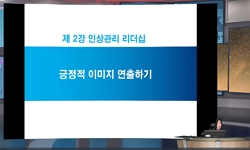Through a focused exploration of "experimental" novels by Raymond Queneau, Claude Simon, and Alain Robbe-Grillet, the reading experience is reexamined in this dissertation. Special attention is paid to the process of "worldbuilding," namely the symbi...
http://chineseinput.net/에서 pinyin(병음)방식으로 중국어를 변환할 수 있습니다.
변환된 중국어를 복사하여 사용하시면 됩니다.
- 中文 을 입력하시려면 zhongwen을 입력하시고 space를누르시면됩니다.
- 北京 을 입력하시려면 beijing을 입력하시고 space를 누르시면 됩니다.
Narrative worlds and fictional worlds: (Be) coming and going in the novels of Raymond Queneau, Claude Simon, and Alain Robbe-Grillet.
한글로보기https://www.riss.kr/link?id=T12370232
- 저자
-
발행사항
[S.l.]: Rutgers The State University of New Jersey - New Brunswick 2009
-
학위수여대학
Rutgers The State University of New Jersey - New Brunswick Graduate School - New Brunswick
-
수여연도
2009
-
작성언어
영어
- 주제어
-
학위
Ph.D.
-
페이지수
454 p.
-
지도교수/심사위원
Adviser: Derek Schilling.
-
0
상세조회 -
0
다운로드
부가정보
다국어 초록 (Multilingual Abstract)
Through a focused exploration of "experimental" novels by Raymond Queneau, Claude Simon, and Alain Robbe-Grillet, the reading experience is reexamined in this dissertation. Special attention is paid to the process of "worldbuilding," namely the symbiotic relationship between synthetic reading competency and higher-level acts of interpretation. It is argued throughout that readers interact with literary texts not simply as verbal structures, but also by co-creating a multiplicity of imaginary worlds subtended by intentional structures that span the divide between reader and text. The intentional attenuation of subject and object is characteristic of the aesthetic experience as described by Dufrenne, Iser, and Merleau-Ponty, and it is further intensified in the novels of Queneau, Simon, and Robbe-Grillet, which address the status of fiction in fiction. In this way, the reader's attention wanders between the worlds depicted by texts and the words by means of which these worlds are depicted.
The work of these authors is marked by transition and transaction on the part of character and reader. Behind Queneau's language-games, a multiplicity of fictional worlds rapidly cycles in and out of being. Simon's densely packed prose shifts the novice reader into his fictional worlds through the figure of the "soldier-subject." The geometric simplicity of Robbe-Grillet's descriptions hides the impossibility of deciphering the events of his fictional worlds. The reader's interaction with these texts is dynamic, relying upon the basic process of building a world out of disparate textual and extra-textual elements.
Following possible worlds theorists such as Dolezel and Pavel, the two primary worlds engendered by the literary artwork are conceived of as (1) "narrative," whereby the reader manipulates the linguistic building blocks of the text, and (2) "fictional," in which the reader transcends such language-based constraints to emerge into a space clearly distinguished from everyday life. Examination of the reader's nonlinear movement between intertwined narrative and fictional worlds demonstrates Matei Calinescu's provocative notion that every reader is a rereader. It is suggested that understanding the reader's movement between absorption in a text and interaction with a text by means of worldbuilding might elucidate a novel kind of "rereading" exemplified by new technologies.











